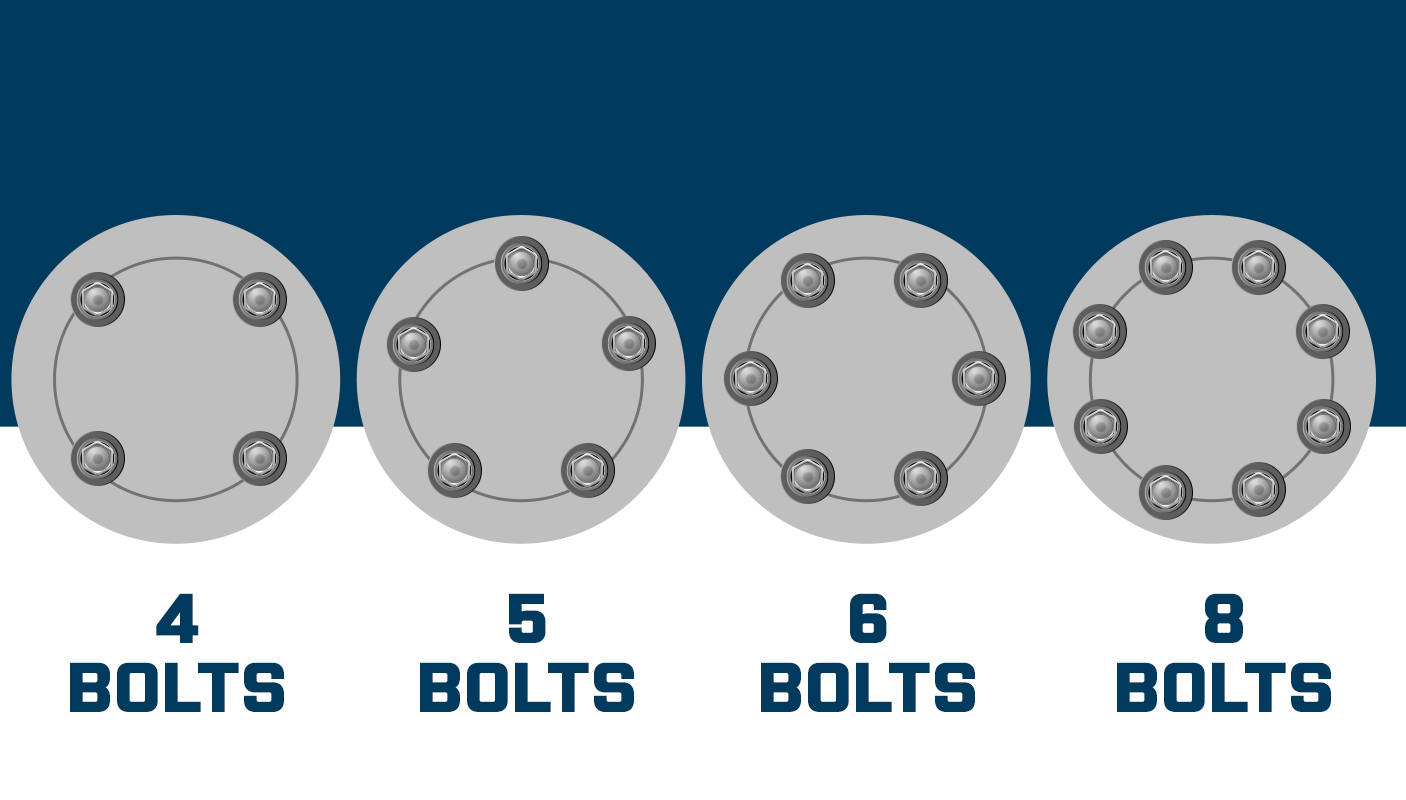Considering Wheel Accessories
When ordering a new set of wheels and tires, you may be required to make additional purchases to ensure proper compatibility with your pickup.
Proper Lug Nuts
In a pinch, you may be tempted to reuse your pickup's factory lug nuts with your new wheels; however, even driving for a brief period on incorrect lug nuts can threaten the safety of you and your loved ones. In addition, lug nuts aren't one-size-fits-all; there are several measurements to consider when deciding which lug nuts are suitable for your application.
Thread Pitch
This measurement refers to the size and thread count of your pickup's lug studs, which can be either SAE or Metric depending on the year, make, and model.
Seat Type
Lug nuts feature several seat types: ball, conical, and flat. Each seat is designed for a different wheel and, thus, cannot be interchanged. In the case of aftermarket wheels, most rely on lugs with a 60-degree conical seat that centers the wheel over the studs.
Depth
When purchasing lug nuts, it's crucial to find a set that fits over your vehicle's wheel studs without bottoming out, ensuring that you can apply proper torque to the wheel.
Wheel Spacers/Adapters
While purchasing wheels with the correct dimensions typically alleviates the need for wheel spacers/adapters, a set of second-hand wheels may require alterations to fit correctly. Wheel spacers/adapters are a simple and inexpensive solution, allowing you to effectively decrease the wheel's offset or adapt a wheel with an incompatible bolt pattern to your vehicle.
Hubcentric Rings
Typically, OEM wheels are of the hub-centric variety, meaning that the wheel's hub bore perfectly mates with your vehicle's hub, ensuring a perfectly centered installation and vibration-free ride. Unfortunately, most aftermarket wheels are engineered for various makes and models, leading manufacturers to enlarge the hub bore significantly. As a result, you may experience slight vibrations from the wheel at high speeds.
Hubcentric rings are an inexpensive yet effective solution. These composite or alloy rings take up the space between your vehicle's hub and the hub bore of the wheel, perfectly centering the wheel and reducing vibrations.








